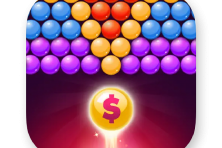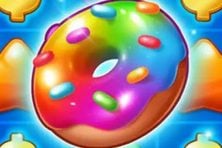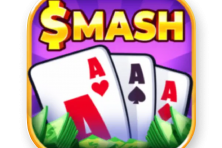Paper Money Value by Serial Numbers: What Are Your Dollars Worth?

Pull any bill out of your wallet. See the dark green numbers on the top-left and top-right corners? They could mean your bill is worth much more than its face value.
If a serial number’s digits are unique or interesting, collectors might be willing to pay big bucks — hundreds or even thousands of dollars — for your bill. You’ll make the most profit off a $1 bill with a fancy serial number, since its face value is lower than, say, a $20 bill, but it’s worth scrutinizing all your cash. Who knows what your $100 bill could actually be worth?
Knowing what your paper money might be worth is all in the serial number.
As with almost anything, there are people who collect currency based on the uniqueness of the serial number attached to it, as described below.
There are also people who use serial numbers to gamble with, playing a game known as liar’s poker. To play this game, you use the serial numbers as if they are numbered playing cards in your hand, and you wager and bluff with those numbers just as you would with playing cards. Any serial number with the same digit repeated would be valuable to people who play liar’s poker.

What Are Serial Numbers?
Serial numbers are eight-digit-long codes that are unique to each bill. They are accompanied by other identifying letters and numbers that tell us which series year the bill is from and where it was printed. They are found on the front of U.S. currency and are always printed twice.
Series Year
On bills worth $5 and up, each serial number begins with a letter, which tells us the series year of the bill. The years are represented by letters A-P as follows:
- A: 1996
- B: 1999
- C: 2001
- D: 2003
- E: 2004
- F: 2003A
- G: 2004A
- H: 2006
- I: 2006
- J: 2009
- K: 2006A
- L: 2009A
- M: 2013
- N: 2017
- P: 2017A
- Q: 2021
The series year is also printed separately on the currency, in between the portrait of the historical figure (such as Lincoln on the $5 bill) and the Secretary of the Treasury’s signature in the bottom right part of the bill. You can check on a bill you have at home to see how these match up.
On dollar bills (and $2 bills), the series year only appears in the bottom right quadrant.
New series are created when there is a new design that has been approved by the Secretary of the Treasury, or when a new Secretary of the Treasury has been appointed. Dollar bills are really historical marker documents.
U.S. Federal Reserve Bank Identifier
Additionally, each serial number has a letter and number that shows us where the currency was printed. The U.S. Federal Reserve has 12 banks, and each bank has a letter and number combination associated with it. The identifiers are as follows:
- A1: Boston
- B2: New York City
- C3: Philadelphia
- D4: Cleveland
- E5: Richmond
- F6: Atlanta
- G7: Chicago
- H8: St. Louis
- I9: Minneapolis
- J10: Kansas City
- K11: Dallas
- L12: San Francisco
On $5 bills and up, the bank identifier appears separately from the serial number, though the letter also appears next to the series year letter before the actual serial number.
On $1 and $2 bills, the letter preceding the serial number will match the bank where the bill was printed (such as K for Dallas) and the number portion of this identifier appears separately on the currency.
Categories of U.S. Paper Money
There are several different categories of paper currency in the U.S., and some are more collectable than others.
Silver Certificates are bills issued between 1878 and 1964 in denominations ranging from $1 to $1,000. They are typically worth between $2-$20 for $1 bills, $10-$12 for $5 bills, and $30-$5,000 for $10 bills — all depending on the year of issue.
Gold Certificates are bills issued between 1863 and 1933 in denominations ranging from $10 to $10,000. Worn bills could be worth $100 or more for $20 bills, $250 or more for $50 bills, $1,000 or more for $100 bills, $2,500 or more for $500 bills, and $2,000 or more for $1,000 bills.
Confederate Issues are bills issued during the Civil War (1861-1865). They are typically not sought by collectors.
Federal Reserve Notes are bills issued between 1914 and the present in denominations ranging from $1 to $10,000. The worth of a modern bill depends on its serial number and how unusual it is. Collectors look for several different types of fancy serial numbers that stand out from the crowd.
15 Types of Valuable Serial Numbers
Want to see if your paper currency is worth way more than $1 or $5? Here’s what to look for.
1. Low Serial Number
Collectors love bills with low serial numbers, such as those below 1,000 or 100 (eg. 00000100). On eBay, these kinds of bills can sell for anywhere from $10 to $300.
The lower the serial number, the more valuable the currency is considered to be; a bill with the serial number 00000001 could be worth $15,000, according to SavingAdvice.com.
2. High Number
People also enjoy collecting currency with high numbers, and these can be even more valuable than lower numbers because there are fewer in circulation. Bills marked with 99999900 and higher are especially prized.
3. Flippers
A flipper is a note whose number can be read right side up or upside down, such as 0069000. Most collectors will want to see a combination of 0s, 6s and 9s on flipper serial numbers, though some may accept flippers with 1s and 8s. On eBay, flippers cost a few bucks up to several hundred dollars.
4. Star Notes
Some bills have a star instead of a letter at the end of their serial number. Known as star notes, these bills are replacements issued when the original bill had a printing error. Because it’s against policy to produce a dollar’s serial number more than once, the mint simply adds a star to the end.
These printing errors aren’t common, so there aren’t many star notes in circulation. You’ll see $1 star notes on eBay for $1.17 and up.
5. Repeaters and Super Repeaters
Blocks of repeating digits (such as 27527527) are sought after, with $1 repeaters starting around $3 or $4 on eBay.
A two-digit repeating number, like 45454545, is called a super repeater and is even more valuable. Some eBay listings start at a few hundred dollars.
6. Solids and Near Solids
A solid serial number is one where every digit is the same, like 55555555.
Only about one out of every 11 million notes is a solid, and they can be worth $500 or more — some super-rare ones are listed on eBay for thousands of dollars!
Since these notes are so rare, people also collect near-solids, where only one digit differs, like 55555575. These will usually bring in less money than a solid, but you’re more likely to find one.
7. Binary Bills
Binary bills have serial numbers with only two numbers, such as 29299299. A near solid would count as one of these binary notes, since it only includes two numbers. On eBay, some binary notes can go for more than $300.
8. Trinary Bills
Because of the rarity of binary bills, some collectors even ask for trinary notes, which contain three unique digits in various combinations (e.g. 29329939). Trinary notes typically sell for a few dollars on eBay, though there are some listed for several hundred dollars.
9. Ladders
When the serial number ascends (e.g. 12345678) or descends (e.g. 8765431) in order, collectors call it a ladder. You’ll also find “near ladders,” where one or two digits break up the ladder.
Ladder notes sell for anywhere from $9 on eBay to as much as $100,000.
10. Birthdays
Some collectors want notes with a specific year or date in the serial number, perhaps a famous date or one meaningful to them. For example, 02162006 might be valuable to a collector whose child was born Feb. 16, 2006.
A serial number that just includes the year is also desirable, such as 10901985 or 10002010.
11. Radars and Super Radars
A radar serial number reads the same backwards and forwards, like a palindrome. For example, 06288260. A good condition, uncirculated $1 radar could sell for about $25 — or even more than $100.
If only the end two digits are different (like 27777772), you’ve got a super radar, which is much more rare and valuable. Even a $1 bill with this type of serial number can sell for $129 and up on eBay.
12. Consecutives
When you have two or more separate notes with consecutive serial numbers, like 25348793 and 25348794, you have one of these series. They’re not uncommon, since you can get consecutive bills at any bank, but can be valuable if they also fit into another category on this list.
Consecutives can sell on eBay for as little as a few dollars or as much as a few hundred.
13. Doubles
Doubles occur when a serial number includes pairs of numbers, such as 24459387. The most valuable type is called a quad double, when a serial number has four sets of doubles (e.g. 55998833).
14. Double Quads
While technically they’re a version of a quad double, notes whose serial numbers consist of two sets of four of the same number are called double quads. (Confusing, isn’t it?)
For example, 77776666 is a double quad. These bills are rarer and more valuable.
15. Bookends
When the serial number has the same two or three digits on both ends, it’s called a bookend. Three-number bookends, like 36584365, are more valuable than two-digit bookends, like 36829736. Prices start around $3 for a $1 bookend on eBay.
How to Look Up Serial Numbers
If you think you might have possession of a bill that’s worth more than its face value, you can go online to look up the serial number.
To test it out, we looked up the number on a random $5 bill at MyCurrencyCollection.com. Once you type in the bill’s eight-digit number, it’ll assign it a percentage on the “Coolness Index.” This index is created by CoolNumbers.com using a formula that evaluates numbers according to their “interesting properties.”
Our $5 bill was 89.9% cool, or “almost cool,” according to the website. Here are some facts we found out about the note that made it almost (but not quite) cool:
- It had a 4-of-a-kind and 1 pair, which only 2.6% of bills reportedly have.
- The bill’s digits had a sum of 48, and 8% of eight-digit serial numbers sum to at least 48.
- It had four unique digits, and 9.3% of eight-digit serial numbers have four or fewer digits.
- It contained two pairs together, which is true for only 10% of serial numbers on paper money.
Unfortunately, “almost cool” is not enough to push the value of the $5 up, so we won’t be making any extra money on this one. Sadly, the dollar bill we tested was ranked as solidly “uncool” with just 18.5% on the Coolness Index.
However, checking online to see if your money is cool (or uncool) doesn’t guarantee that you’ll be able to sell it for more than face value. While you can list your paper money for as much or as little as you want, its worth depends on what people are willing to pay for it.
Where to Sell Your Paper Money
If you do find yourself the owner of a unique banknote, there are several places you can cash it in.
The easiest option is to list your note on eBay. Do a search to see what similar notes are listed for, and list yours in the same ballpark. You don’t want to list too low and wonder if you could have made more; nor do you want to list it too high and risk it not selling at all.
If you don’t want to deal with eBay, you can search locally to see if there are any paper money dealers in your area. If there are, you can take your bank notes to them for an appraisal and they will either offer to purchase the note from you or direct you to someone who may be interested.
Frequently Asked Questions
Still have questions about your paper money and what it might be worth? These frequently asked questions should help.
Generally, the more unique the serial number on your dollar bill, the more likely it is to be worth more than face value. Some examples of uniqueness include repeating numbers, numbers with a star after them and sequences (such as 12345678). You can see a full list of potentially valuable serial number types in the “15 Types of Valuable Serial Numbers” section above.
To know whether your dollar bill could be worth more than just $1, you need to examine the serial number. This is an eight-digit number that is printed twice on all paper money, and it has one or two letters as a prefix, depending on the denomination. If the number is unique or has a star after it, it could be valuable. See “15 Types of Valuable Serial Numbers” and “How to Look Up Serial Numbers” above.
You can check your serial numbers online to get an idea of whether they might be worth more than face value. See the “How to Look Up Serial Numbers” section above.
Paper money is usually worth the exact amount listed on the face (for example, $1, $5 or $10). However, some bills have unique serial numbers that make them desirable to collectors and therefore sell for more than their face value. See “15 Types of Valuable Serial Numbers” to learn more about the types of unique numbers that are valuable to collectors.
Maryann Akinboyewa and Catherine Hiles are contributors to The Penny Hoarder. Senior staff writer Robert Bruce and contributor Kent McDill also contributed.






















